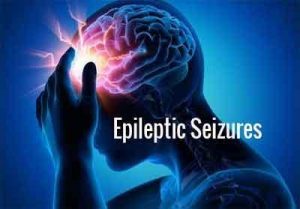- Home
- Editorial
- News
- Practice Guidelines
- Anesthesiology Guidelines
- Cancer Guidelines
- Cardiac Sciences Guidelines
- Critical Care Guidelines
- Dentistry Guidelines
- Dermatology Guidelines
- Diabetes and Endo Guidelines
- Diagnostics Guidelines
- ENT Guidelines
- Featured Practice Guidelines
- Gastroenterology Guidelines
- Geriatrics Guidelines
- Medicine Guidelines
- Nephrology Guidelines
- Neurosciences Guidelines
- Obs and Gynae Guidelines
- Ophthalmology Guidelines
- Orthopaedics Guidelines
- Paediatrics Guidelines
- Psychiatry Guidelines
- Pulmonology Guidelines
- Radiology Guidelines
- Surgery Guidelines
- Urology Guidelines
C PAP leads to substantial and sustained reduction in epileptic seizures

In data presented at the annual meeting of the American Epilepsy Society, the researchers have reported that in patients with epilepsy, treatment of obstructive sleep apnea with continuous positive airway pressure (C PAP) may lead to substantial and sustained reductions in seizure activity.
Dr. Thapanee Somboon and associates in a single-center study of patients treated at the Cleveland Clinic found at least a 50% reduction in seizures from baseline at 1 year compared with those who weren't treated, and with those who didn't have OSA (63% versus 14% and 44%). The Results of the study infer that poor sleep quality is an important but preventable risk factor for seizures.
In one of the largest this study conducted to evaluate the effect of cPAP on seizure activity, all 197 patients had epilepsy but only 122 had obstructive sleep apnea (OSA). Of those with OSA, 73 were treated with cPAP and 49 were not. An additional 75 patients with epilepsy but no OSA were also treated with cPAP. Seizure activity in all groups was evaluated over a period of 1 year.
In the study, the treatment success was defined as no seizure activity or at least a 50% reduction from baseline in seizure activity. It was achieved in 85% of those with OSA treated with cPAP, 55% of those with OSA that did not receive cPAP, and 65% of those who were treated with cPAP but did not have OSA. After adjusting for baseline seizure freedom and standard AED dosing, OSA treated with PAP therapy remained more successful than untreated or no OSA.
The difference was even greater among those with seizure activity in the 6 months prior to cPAP use. In these, a 50% or greater reduction in seizure activity was achieved in 63% of those with OSA treated with cPAP but in only 14% of those with OSA that did not receive cPAP. In the group without OSA, 44% achieved a 50% or greater reduction in seizure activity from baseline on cPAP.
In addition to at least a 50% reduction in seizures from baseline, more of them also achieved "treatment success." defined as no seizure activity continued from baseline, or at least a 50% reduction from baseline in seizure activity.The researchers noted that no significant differences were present at 3 or 5 year follow-up.
Sleep disturbances and OSA are more common in patients with epilepsy than age-matched controls, according to Dr. Somboon, who cited published studies substantiating these statements. She noted that there are also previously published studies associating improved sleep hygiene, including improved sleep hygiene achieved with cPAP, with a reduced risk of seizure activity in epilepsy patients. However, at present there are no guideline recommendations for screening patients with epilepsy for OSA or other causes of impaired sleep, according to Dr. Somboon.
Although Dr. Somboon acknowledged that the data collected in this study cannot provide a definitive link between cPAP treatment, improved sleep, and reduced risk of seizure activity, this study does support these associations in the context of other evidence.
"We think clinicians should routinely screen patients with epilepsy for OSA and consider cPAP as a strategy to reduce seizure risk," she said.
For further reference log on to :
Source Reference: Somboon T, et al "Long-term seizure control in epileptic patients with obstructive sleep apnea using positive airway pressure therapy" AES 2017; Abstract 1.201.

Disclaimer: This site is primarily intended for healthcare professionals. Any content/information on this website does not replace the advice of medical and/or health professionals and should not be construed as medical/diagnostic advice/endorsement or prescription. Use of this site is subject to our terms of use, privacy policy, advertisement policy. © 2020 Minerva Medical Treatment Pvt Ltd